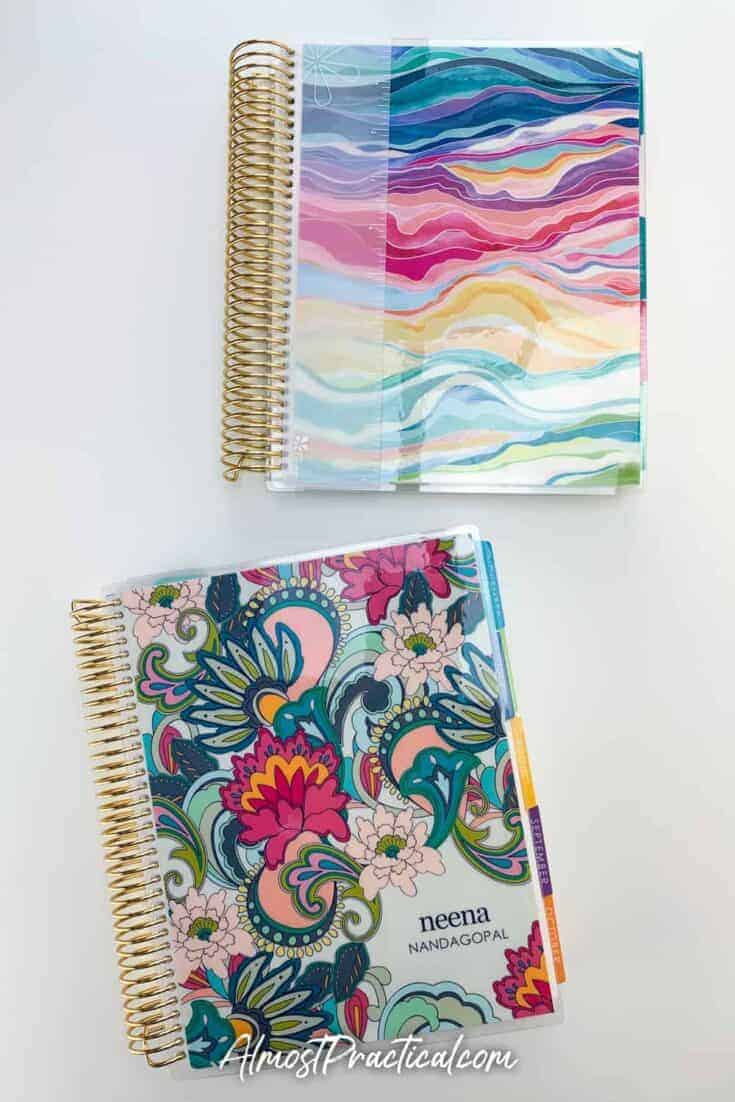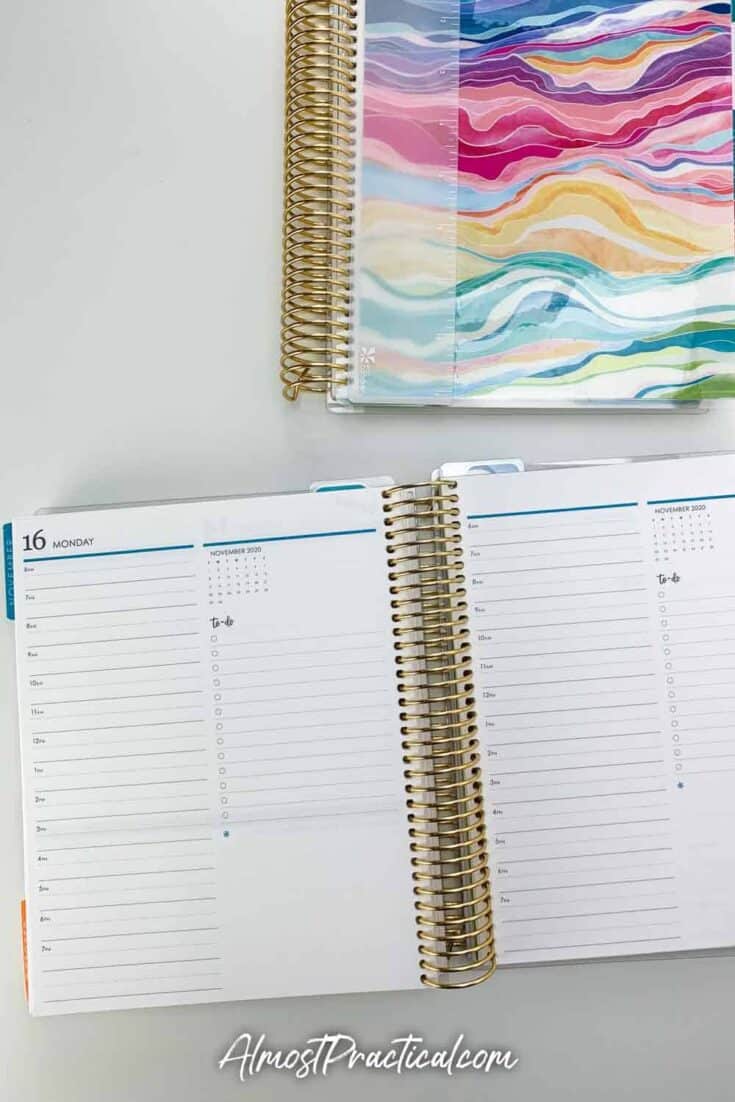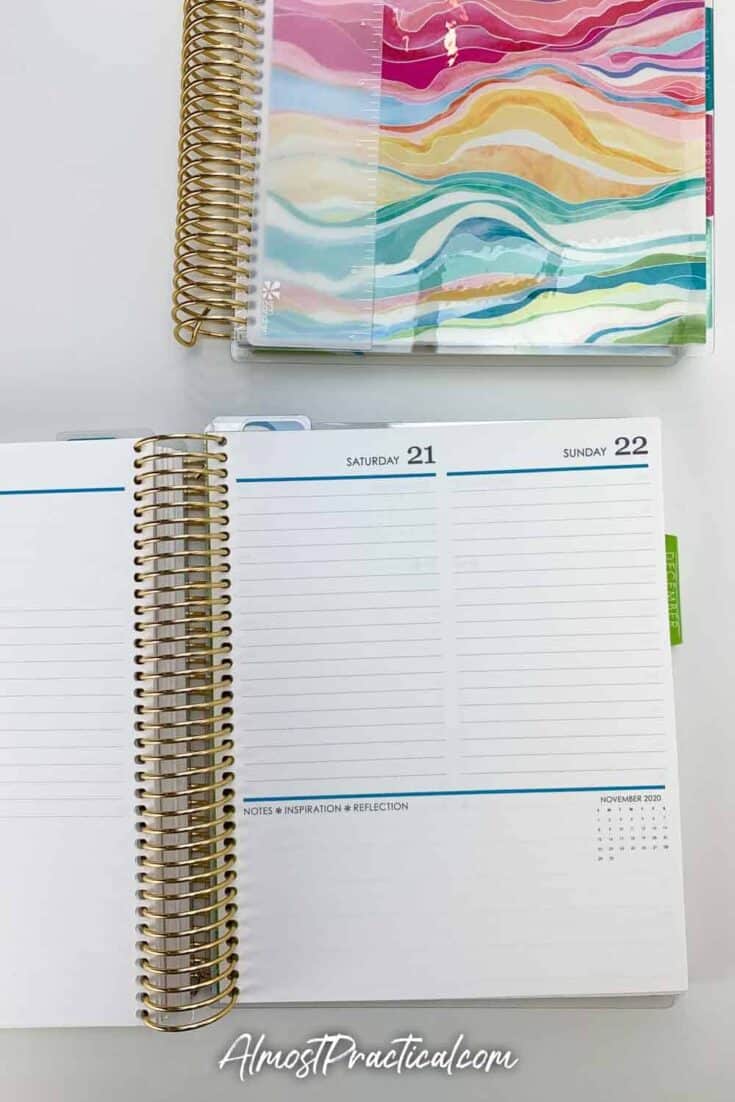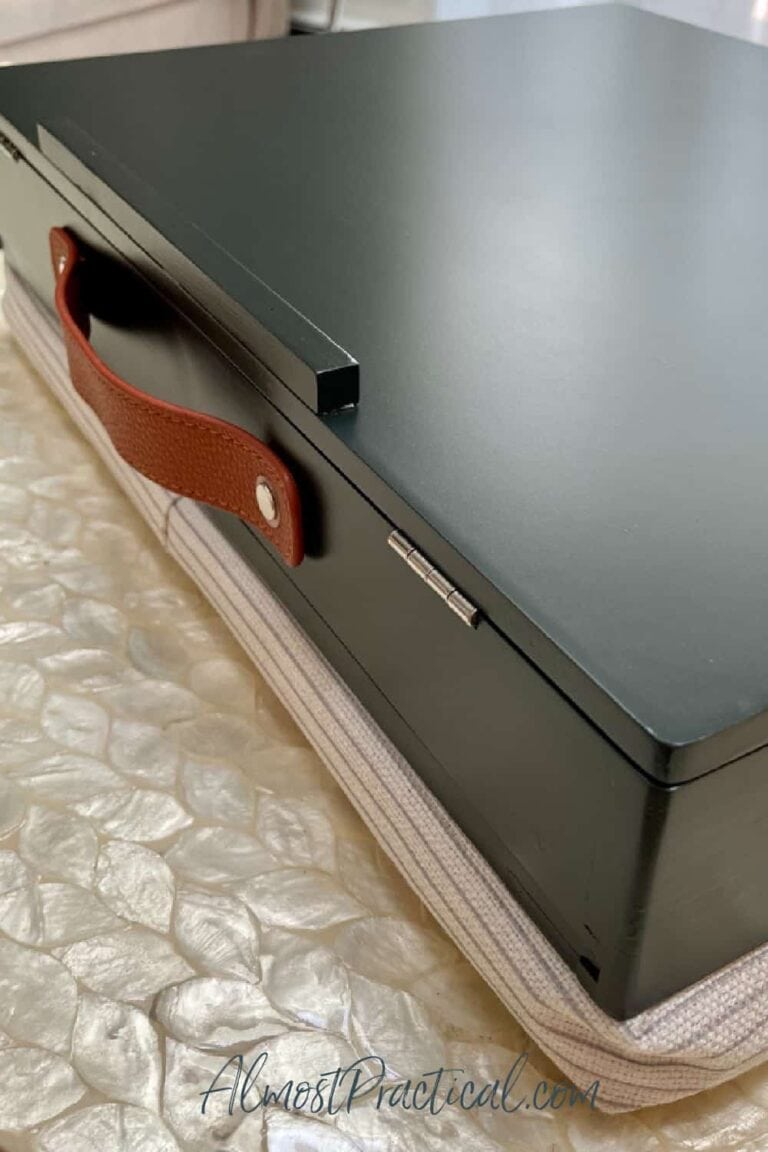Pros and Cons of the Erin Condren Daily Duo LifePlanner
This post may contain affiliate links which means I make a commission if you shop through my links.
Disclosure Policy
I have been using the Erin Condren Daily Duo LifePlanner since July and I thought I would share a few of my takeaways with you.
Now that we are heading into the last quarter of the year – you might be in the market for a new planner and this one might be on your radar.
Hopefully, this will help you to make your decision.

What is the Daily Duo?
Earlier this year, Erin Condren introduced a new version of the
This planner is essentially one page per weekday, with both Saturday and Sunday sharing a single page.
Because the one page per day layout is a lot of pages – the Daily Duo is actually two books instead of one.
Each book holds six months – but they are sold as a set of 2 books – hence the name Daily Duo.
You can see my full review of the Erin Condren Daily Duo LifePlanner here.
Why I Chose the Daily Duo Planner
For the first half of 2020 (before the Daily Duo was introduced) I was using an Erin Condren LifePlanner in the hourly layout.
I liked this format a lot because I could see a whole week of my plans on one two page spread.
However, the hourly layout had it’s limitations.
There just wasn’t much space to jot down notes or create a daily to do list.
To make up for the lack of space, I would use sticky notes, snap in dashboards, and/or a supplemental petite planner to capture my planning overflow.
Honestly, it worked well for me.
But, when the Daily Duo debuted, I was drawn to it primarily because of the planning space that it offered.
At this point I would love to say that the Daily Duo is everything I wanted and more.
And in some ways it is – but maybe it is too much of a good thing.
Let me explain this by going through the pros and cons.
Related: Erin Condren Goal Setting Journal Petite Planner Review
Pros – What I Like About the Daily Duo
As I mentioned, the Daily Duo has PLENTY of space for all my planning.

There is a 2 page monthly spread at the beginning of each month – which I use as my high level view of all my important appointments and events.
This is followed by 2 Productivity Pages where I keep a running To Do list of the month and also keep track of projects, highlights, books I read, and more.
Then you go right into the daily pages where you have an hourly column for planning out your day, a “to do” list column, and a blank section for notes.
There is tons of space.
At the end of the month there is a blank lined page which I use to journal a monthly reflection.
Because each volume of the Daily Duo only has 6 months of pages, the book itself is a manageable size.
I also like that I can sort of reevaluate my planner after 6 months. If I want to switch back to the hourly
It’s perfect.
Except for one con.
Cons – What I Don’t Like About the Daily Duo LifePlanner
All that space is fabulous – until it isn’t.

There are days that I honestly don’t have much to write.
I mean, I am busy, but if I am sitting and writing an article all day – well I don’t need a whole page to plan that.
So, there are some days or weeks that are just kind of blank.
And somehow that puts pressure on me because I feel like I need to fill it up.
Yet, there are other days when I am on a super tight schedule, take lots of notes, and meticulously track my to do items. On days like this – I fill up the entire page with notes and sometimes even spill onto the next one.
In my Erin Condren Hourly
Did It Meet My Expectations?
The Daily Duo is really good, maybe too good. 😉
At the end of the day, I think that I will be sticking with my Daily Duo because I really do love it.
You can see more detail into how I use the Daily Duo here.
Which Erin Condren








This next year (2024), I am trying a different planner instead of Erin Condren’s Daily Duo. The reason is that I am tired of having 2 planners every year and I still want a smaller planner. I mostly use it to record incoming and outgoing work so the times are not necessary for me but the dates are. I am trying the Day Designer Mini Daily for 2024. One con already is that I wish it was like the cover of the Erin Condren planner (more flexible) but other than that, the thought of a daily planner that has the whole year in one book and still the size of my daily duo was frankly the nail in the Erin Condren coffin this year. I have purchased Erin Condren planners for probably 7 years now but I guess we will see how this new planner fairs for 2024. I was able to print one of their free printable pages to get an idea of the space I would have to write in and while the font is small, I can read it fine and I could write on the page fine.
Thank you for your thoughtful, genuine review.